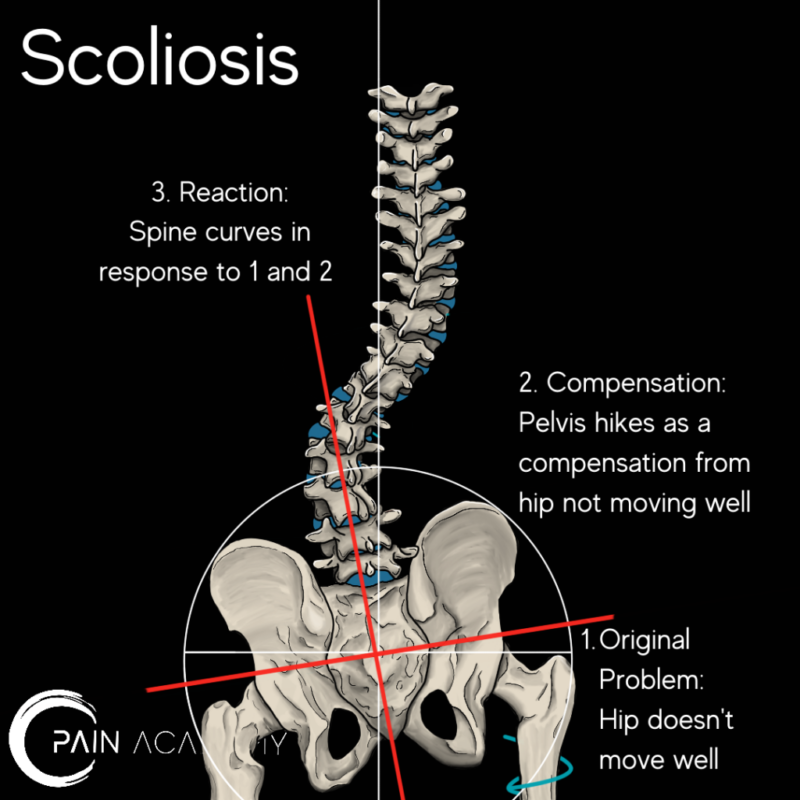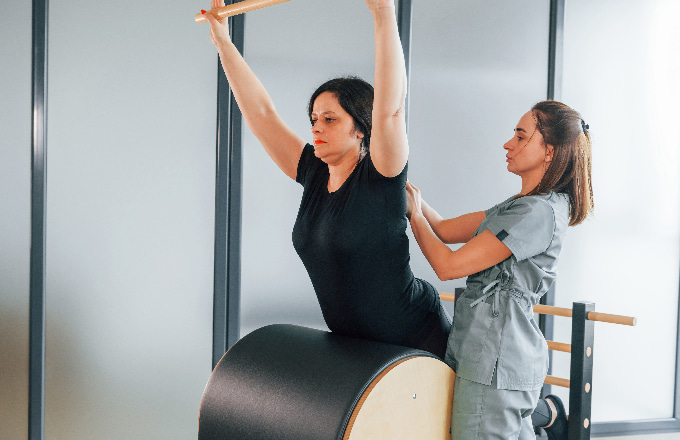Scoliosis is a condition characterized by an abnormal curvature of the spine, which can affect people of all ages. It is crucial to detect and diagnose scoliosis early to prevent further progression and potential complications. Scoliosis exams play a vital role in evaluating the severity of the condition and determining the appropriate treatment plan. This article will provide key information and steps for a thorough scoliosis evaluation, including understanding the causes and symptoms, the importance of early detection and diagnosis, choosing the right healthcare provider, preparing for the exam, interpreting exam results, and developing a treatment plan.

Understanding Scoliosis: Causes and Symptoms
Scoliosis can have various causes, including congenital factors, neuromuscular conditions, and idiopathic origins. Idiopathic scoliosis, which accounts for about 80% of cases, has no known cause. It typically develops during adolescence and affects girls more frequently than boys. Symptoms of scoliosis may include an uneven waistline, one shoulder appearing higher than the other, a prominent shoulder blade, or an abnormal curvature of the spine. Understanding these causes and symptoms is essential for early detection and diagnosis.
Importance of Early Detection and Diagnosis
Early detection and diagnosis of scoliosis are crucial for preventing further progression and potential complications. If left untreated, scoliosis can lead to severe spinal deformities, respiratory problems, and decreased quality of life. According to the Scoliosis Research Society, early detection and treatment can significantly reduce the need for surgery and improve long-term outcomes. Therefore, it is essential to be proactive in seeking scoliosis exams, especially for children and adolescents.
Choosing the Right Healthcare Provider for Scoliosis Evaluation
When preparing for a scoliosis exam, it is crucial to choose the right healthcare provider who specializes in scoliosis evaluation and treatment. Orthopedic surgeons, physical therapists, and chiropractors are among the professionals who can perform scoliosis exams. It is important to research and select a provider with expertise in scoliosis to ensure accurate evaluation and appropriate treatment recommendations. Seeking referrals from primary care physicians or trusted healthcare professionals can also help in finding the right provider.

Preparing for the Scoliosis Exam: What to Expect
Before the scoliosis exam, it is essential to gather relevant medical history and previous test results. This information will provide valuable insights into the progression of the condition and help the healthcare provider make an accurate diagnosis. During the exam, the healthcare provider will conduct a physical examination to assess spinal curvature and range of motion. Diagnostic imaging, such as X-rays, MRI, and CT scans, may also be necessary to obtain detailed images of the spine and assess the severity of the curvature.
Gathering Medical History and Previous Test Results
When preparing for a scoliosis exam, it is important to gather all relevant medical history and previous test results. This includes any previous X-rays, MRI scans, or CT scans of the spine, as well as any previous treatment or therapy records. This information will provide valuable insights into the progression of the condition and help the healthcare provider make an accurate diagnosis. It is also important to inform the healthcare provider about any family history of scoliosis, as there may be a genetic component to the condition.

Physical Examination: Assessing Spinal Curvature and Range of Motion
During the scoliosis exam, the healthcare provider will conduct a physical examination to assess spinal curvature and range of motion. The patient will be asked to stand, bend forward, and perform various movements to evaluate the alignment and flexibility of the spine. The healthcare provider will visually assess the curvature of the spine, looking for any signs of asymmetry or abnormal curvature. They may also use a scoliometer, a device that measures the angle of spinal rotation, to quantify the severity of the curvature.
Diagnostic Imaging: X-rays, MRI, and CT Scans
In addition to the physical examination, diagnostic imaging is often necessary to obtain detailed images of the spine and assess the severity of the curvature. X-rays are commonly used to evaluate scoliosis as they provide a clear view of the spine’s alignment and curvature. MRI and CT scans may be recommended in certain cases to obtain more detailed images or assess any underlying conditions that may be contributing to the scoliosis. These imaging techniques help the healthcare provider determine the appropriate treatment plan.
Additional Tests and Assessments for Scoliosis Evaluation
In some cases, additional tests and assessments may be necessary to evaluate scoliosis thoroughly. These may include pulmonary function tests to assess lung capacity and function, neurological examinations to evaluate nerve function, and bone density tests to assess bone health. These additional tests help the healthcare provider understand the impact of scoliosis on other aspects of the patient’s health and guide treatment decisions.
Collaborating with Specialists: Orthopedic Surgeons, Physical Therapists, and Chiropractors
Scoliosis evaluation often requires collaboration with various specialists, including orthopedic surgeons, physical therapists, and chiropractors. Orthopedic surgeons specialize in the surgical treatment of scoliosis and may be consulted if the curvature is severe or progressing rapidly. Physical therapists play a crucial role in developing exercise programs and providing non-surgical treatment options to manage scoliosis. Chiropractors can also provide non-surgical treatment options, including spinal adjustments and therapeutic exercises. Collaborating with these specialists ensures a comprehensive evaluation and a well-rounded treatment plan.
Interpreting Exam Results: Understanding the Severity of Scoliosis
After the scoliosis exam, the healthcare provider will interpret the exam results to determine the severity of the scoliosis. This is typically done by measuring the Cobb angle, which quantifies the degree of spinal curvature. The Cobb angle is measured using X-rays and is an essential factor in determining the appropriate treatment plan. The healthcare provider will also consider other factors, such as the patient’s age, skeletal maturity, and overall health, to assess the impact of scoliosis on the individual.
Developing a Treatment Plan: Options and Recommendations
Based on the exam results and the severity of the scoliosis, the healthcare provider will develop a treatment plan tailored to the individual’s needs. Treatment options for scoliosis vary depending on the severity of the curvature and the patient’s age. Non-surgical options may include observation, physical therapy, bracing, or specialized exercises. In more severe cases, surgical intervention may be necessary to correct the curvature and prevent further progression. The healthcare provider will discuss the available options and make recommendations based on the individual’s specific circumstances.
In conclusion, preparing for a scoliosis exam involves understanding the causes and symptoms of scoliosis, recognizing the importance of early detection and diagnosis, choosing the right healthcare provider, gathering medical history and previous test results, undergoing a physical examination and diagnostic imaging, considering additional tests and assessments, collaborating with specialists, interpreting exam results, and developing a treatment plan. By following these steps and seeking timely evaluation, individuals with scoliosis can receive appropriate care and improve their long-term outcomes.
References
- Negrini S, Donzelli S, Aulisa AG, et al. “2016 SOSORT guidelines: orthopaedic and rehabilitation treatment of idiopathic scoliosis during growth.” Scoliosis and Spinal Disorders. 2018;13:3. doi: 10.1186/s13013-017-0145-8.
- Hresko MT. “Clinical practice. Idiopathic scoliosis in adolescents.” New England Journal of Medicine. 2013;368(9):834-841. doi: 10.1056/NEJMcp1209063.
- Weinstein SL, Dolan LA, Cheng JC, Danielsson A, Morcuende JA. “Adolescent idiopathic scoliosis.” The Lancet. 2008;371(9623):1527-1537. doi: 10.1016/S0140-6736(08)60658-3.
- Luk KD. “Scoliosis evaluation, treatment indications, and options.” Asia Pacific Spine Journal. 2016;10(3). doi: 10.1016/j.apjs.2016.06.001.
- Sanders JO, Andras LM, Iwinski HJ, et al. “Use of the curve progression risk to guide the timing of surgery for adolescent idiopathic scoliosis.” Journal of Bone and Joint Surgery American Volume. 2020;102(11):984-990. doi: 10.2106/JBJS.19.00814.
- Di Felice F, Zaina F, Donzelli S, Negrini S. “Physical exercises as a treatment for adolescent idiopathic scoliosis: an updated systematic review.” Physiotherapy Theory and Practice. 2020;36(5):524-542. doi: 10.1080/09593985.2018.1493161.
- Theodorou DJ, Theodorou SJ, Sartoris DJ. “Musculoskeletal manifestations of scoliosis: a pictorial review.” American Journal of Roentgenology. 2006;187(3):585-592. doi: 10.2214/AJR.05.1208.
- Danielsson AJ, Hasserius R, Ohlin A, Nachemson AL. “A prospective study of brace treatment versus observation alone in adolescent idiopathic scoliosis: a follow-up mean of 16 years after maturity.” Spine (Phila Pa 1976). 2007;32(20):2198-2207. doi: 10.1097/BRS.0b013e31814b80eb.
- Aebi M. “The adult scoliosis.” European Spine Journal. 2005;14(10):925-948. doi: 10.1007/s00586-005-1053-9.
- Luk KD, Newton PO, Clements DH, et al. “The treatment of adolescent idiopathic scoliosis with posterior spinal instrumentation and fusion.” Spine (Phila Pa 1976). 2011;36(5):358-368. doi: 10.1097/BRS.0b013e3181c14c56.
- Zheng Y, Dang Y, Yang Y, et al. “Surgical treatment of adult idiopathic scoliosis with posterior-only approach and pedicle screw instrumentation.” Journal of Spinal Disorders & Techniques. 2011;24(5):302-309. doi: 10.1097/BSD.0b013e31820159c4.
- Smith JS, Shaffrey CI, Berven S, et al. “Prospective multicenter assessment of perioperative and minimum 2-year postoperative complication rates associated with adult spinal deformity surgery.” Journal of Neurosurgery: Spine. 2010;13(5):584-591. doi: 10.3171/2010.5.SPINE0946.
- McCarthy RE, Luhmann S, Lenke L, McCullough FL. “The management of thoracic scoliosis: anterior versus posterior surgery.” Orthopedic Clinics of North America. 1994;25(2):225-236. doi: 10.1016/S0030-5898(20)31611-3.
- Stokes IA. “Analysis and simulation of progressive adolescent scoliosis by biomechanical modeling.” Spine (Phila Pa 1976). 2007;32(2):129-137. doi: 10.1097/01.brs.0000251863.94482.83.
- Berdishevsky H, Lebel VA, Bettany-Saltikov J, et al. “Physiotherapy scoliosis-specific exercises—a comprehensive review of seven major schools.” Scoliosis and Spinal Disorders. 2016;11:20. doi: 10.1186/s13013-016-0076-9.

